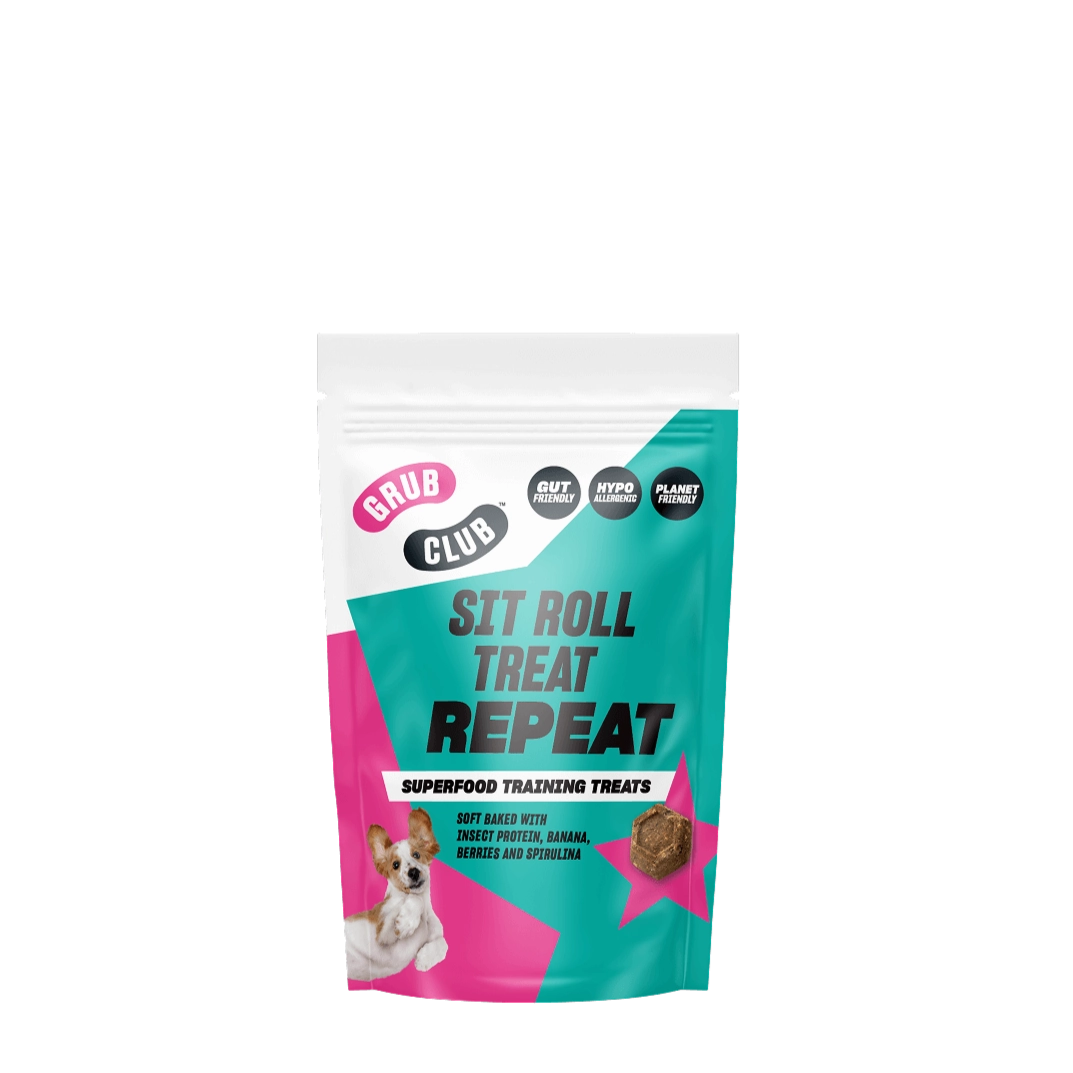Top Dog: All-In-One
Supplement for Snout-to-Tail Wellness
60 Scoops
FREE UK Delivery on orders above £49.
You have £0.00 in your cart, spend £49.00 more and get free shipping.
60 Scoops
1 Bar
72 Bags
1 Pack
1 Pack
1 Pack
Or continue without a name
CheckoutProtein is an important part of any dog’s diet but choosing the best type, finding a food that will provide them with all they need and knowing how much protein they require on a daily basis isn’t always very clear to a per owner.
Luckily for you, here at Grub Club we are 'connoisseurs of protein' and we know just the thing that will help your dog with both their nutrition and their gut health.
It’s commonly believed that the best way to gain the right amount of protein each day is through eating meat but you can now consider that myth firmly busted. Dogs can get their recommended protein intake from other sources, not just from meat:
“Dogs are omnivores, which means they can eat both meat and plant-based foods. As long as you buy a complete commercial food appropriate for your dog’s age and lifestyle, your dog will be getting all the nutrients they need whether you’re feeding meat or not”
In times when many dogs are developing health issues due to the type of protein they are ingesting and when more of us are becoming more eco-conscious it really is important to look a little further into the protein sources that are available to us.

Meat is most definitely not the only food type to contain protein and you may be surprised to learn that tasty food types such as cheese, lentils, black beans, lima beans, eggs, pasta, peanut butter, yoghurt and even insects are all high in protein.
Insects contain almost all of the nutritional benefits that you get from eating meat, fish and rye bread all at once and as many dogs would naturally eat these in the wild, they are the ideal choice of protein source for your pet dog.
Bet you can guess what we’re going to say, can’t you?!… That’s right, it is insect protein. Here at Grub Club, we use insect protein from Black Soldier Fly Larvae in our dog food and treats. It is rich in omegas and amino acids and is naturally hypoallergenic for dogs making them gentle on tummies and easy to digest.
Typical feeding guidelines suggest that an adult dog should be fed a minimum of 18% protein within their food each day. Our All-Day Buffet contains 30% protein via insects meaning you can feel fully confident that they will be getting all they need with every bite!
Did you know that some dogs can develop allergies to particular protein sources? It is actually becoming quite common and yet we don’t feel this is as well-known right now as it could be.
The symptoms of a protein allergy include:

A novel protein is a source of protein that has never been previously introduced to a diet whether that’s your own diet or your dog’s. The majority of dogs will gain their protein from well-known food sources such as chicken, beef and lamb but what happens if those are causing allergies in your pet? Well, switching to another source can change the way in which the body reacts to protein.
Protein can of course be found in other ways and some of the most novel ones include foods many of us may not have ever thought of such as wild boar, pheasant, duck, rabbit, alligator, horse or even insects. Choosing a novel protein diet can help to remedy those allergy symptoms we mentioned above leaving you with a calmer, happier, itch-free pooch.
To determine whether or not you dog has a protein allergy you could try what is called the elimination diet. This is where you feed your dog a new food that contains none of the ingredients in their previous dog food. This would include all treats and titbits too with the recommended timeframe for results being around 8-12 weeks.
After this period, you can begin to reintroduce your dog’s old food. If they react, your dog definitely has an allergy. You could then take this to the next level by asking your vet for an allergy test or by seeing which common allergens cause a reaction by feeding each to your dog in separate sittings. Once you are aware of their food allergies you can go on to choose a food that doesn’t contain those particular food types.
Choosing a protein-rich diet for you dog is really important but as you can see it doesn’t necessarily have to come from meat.






